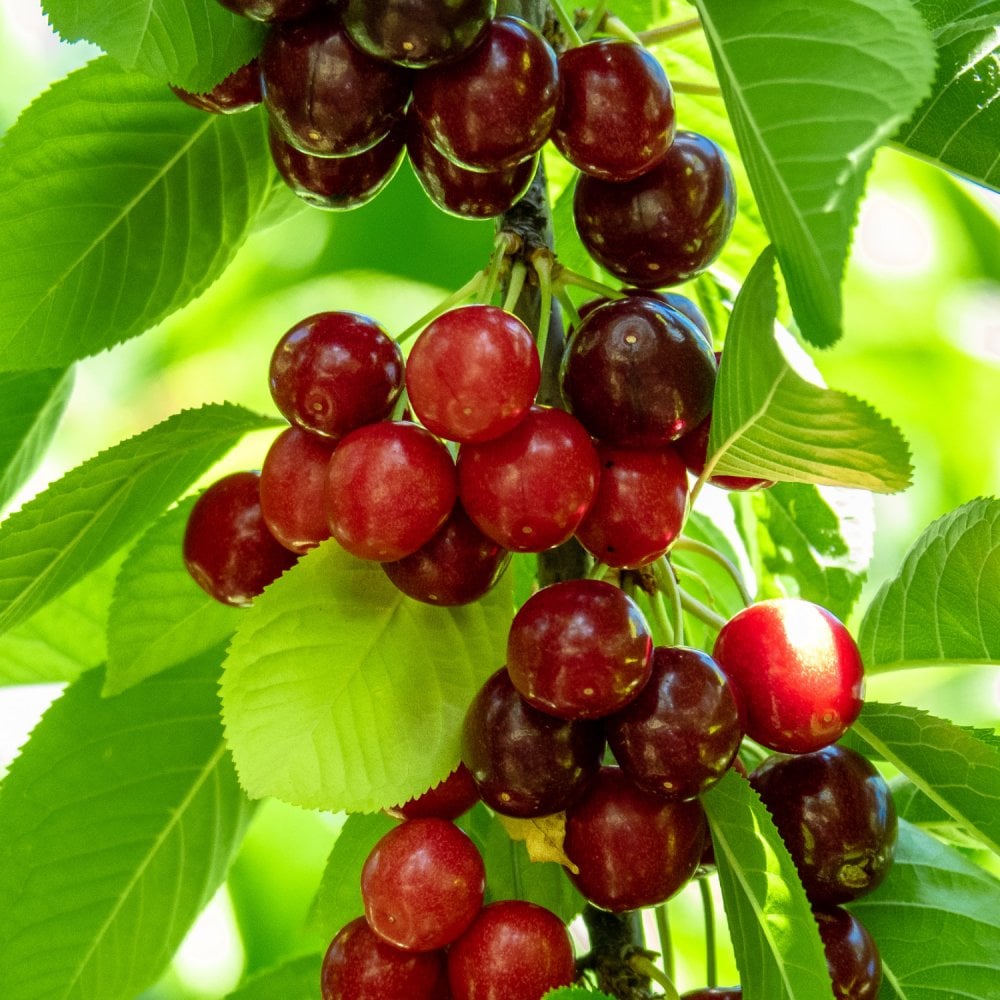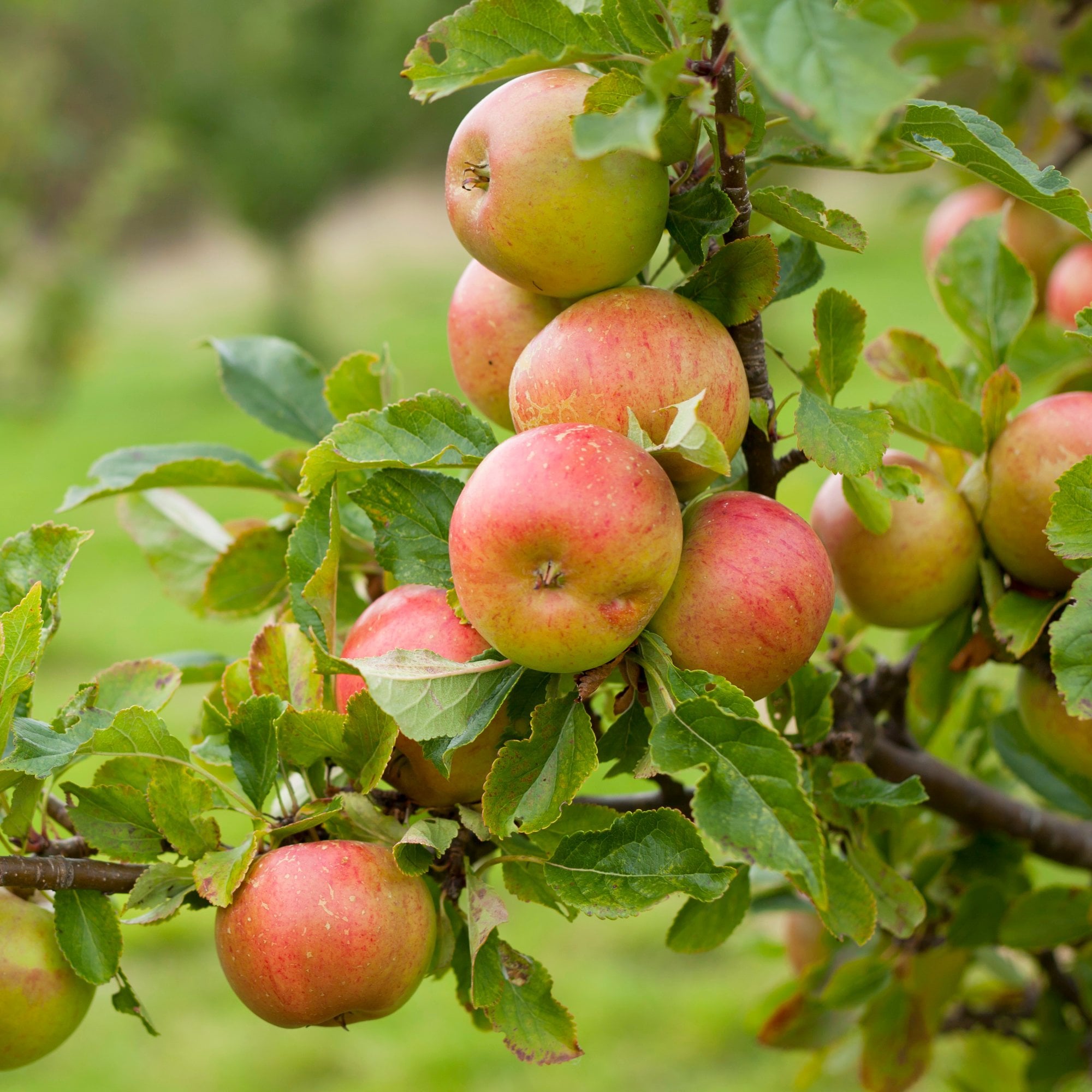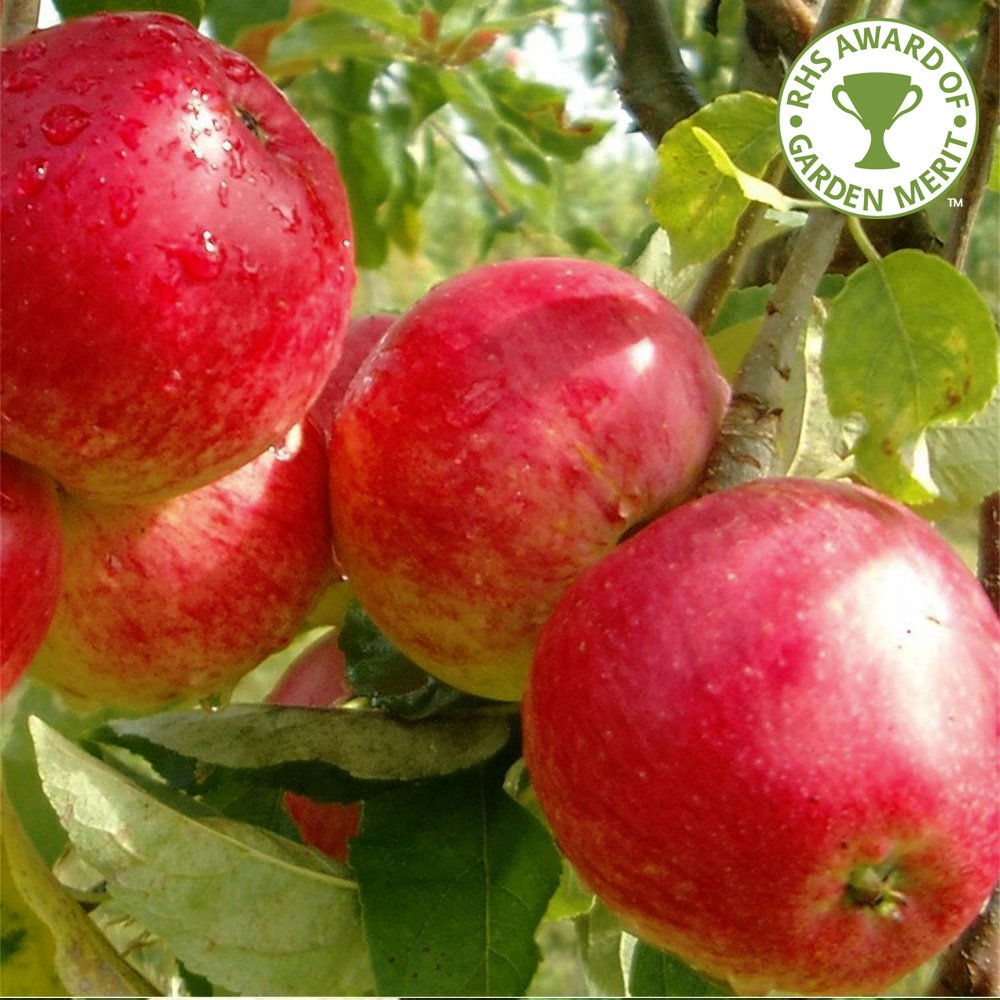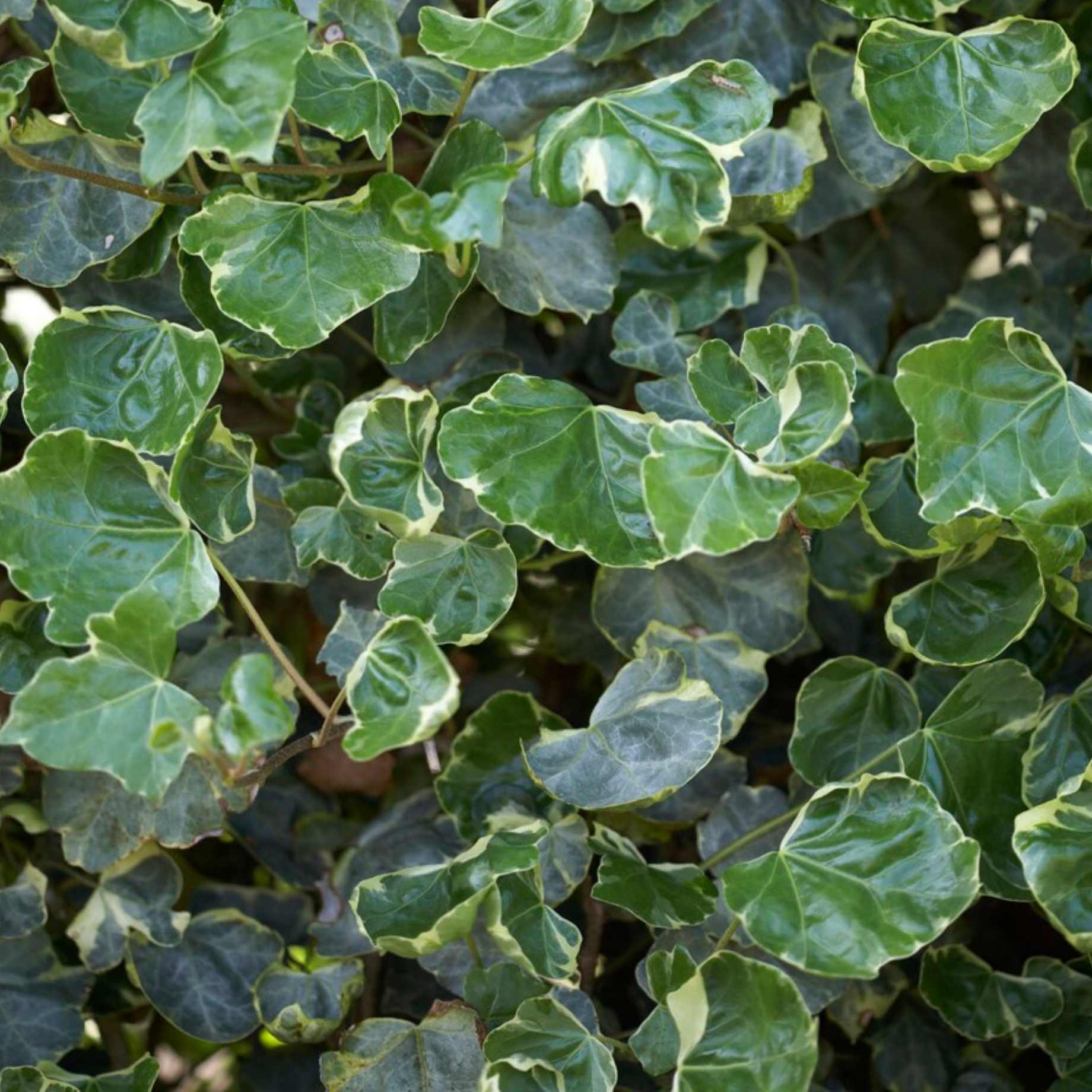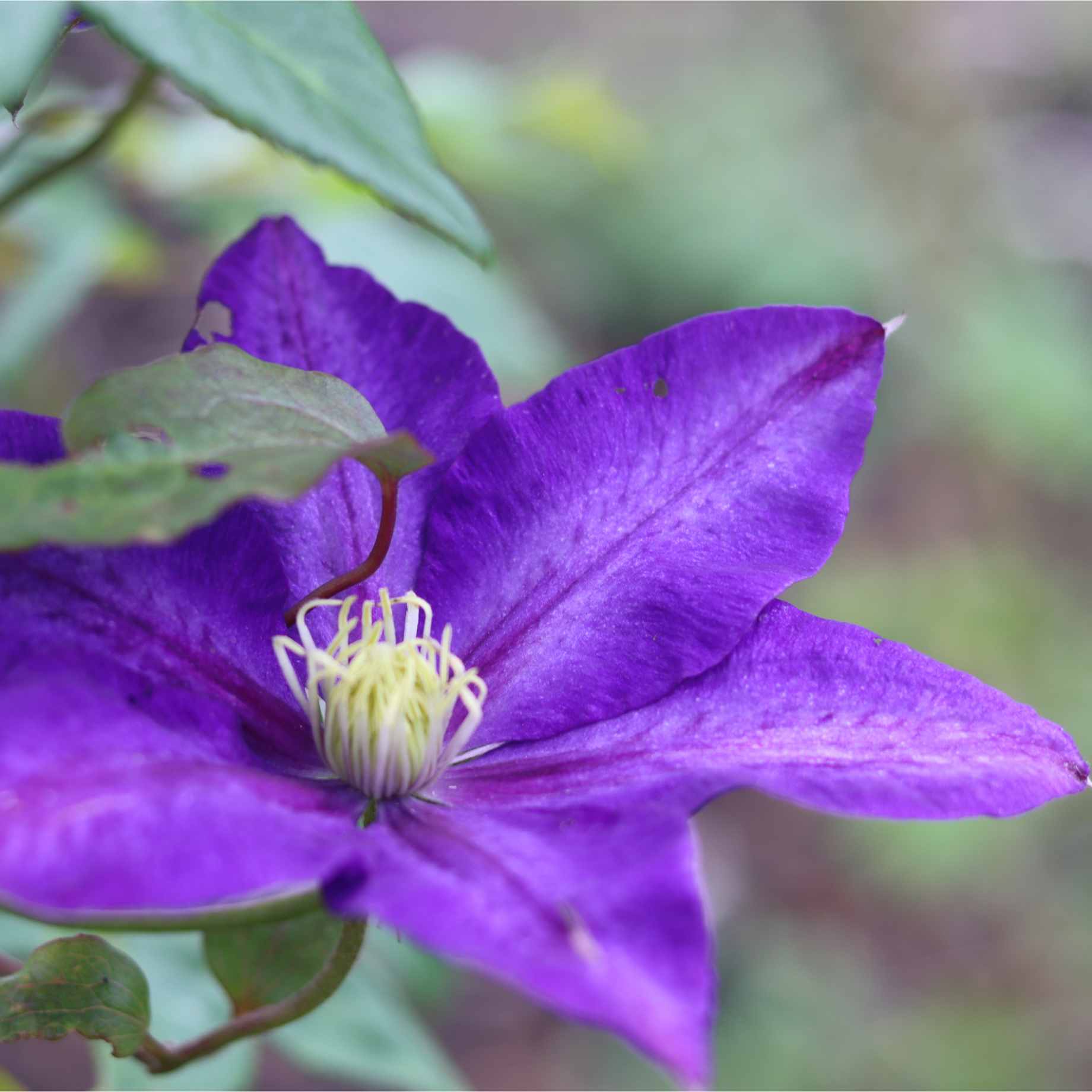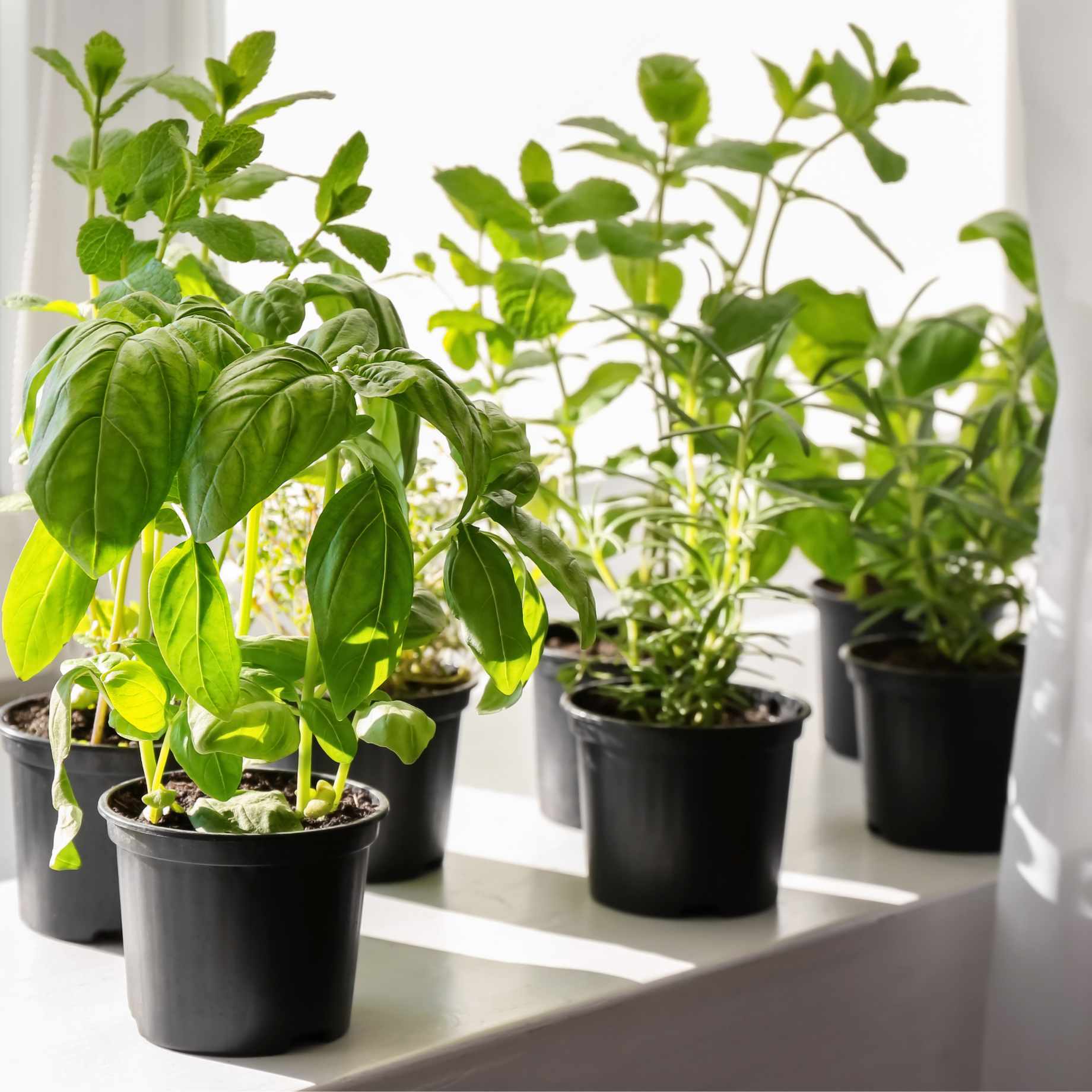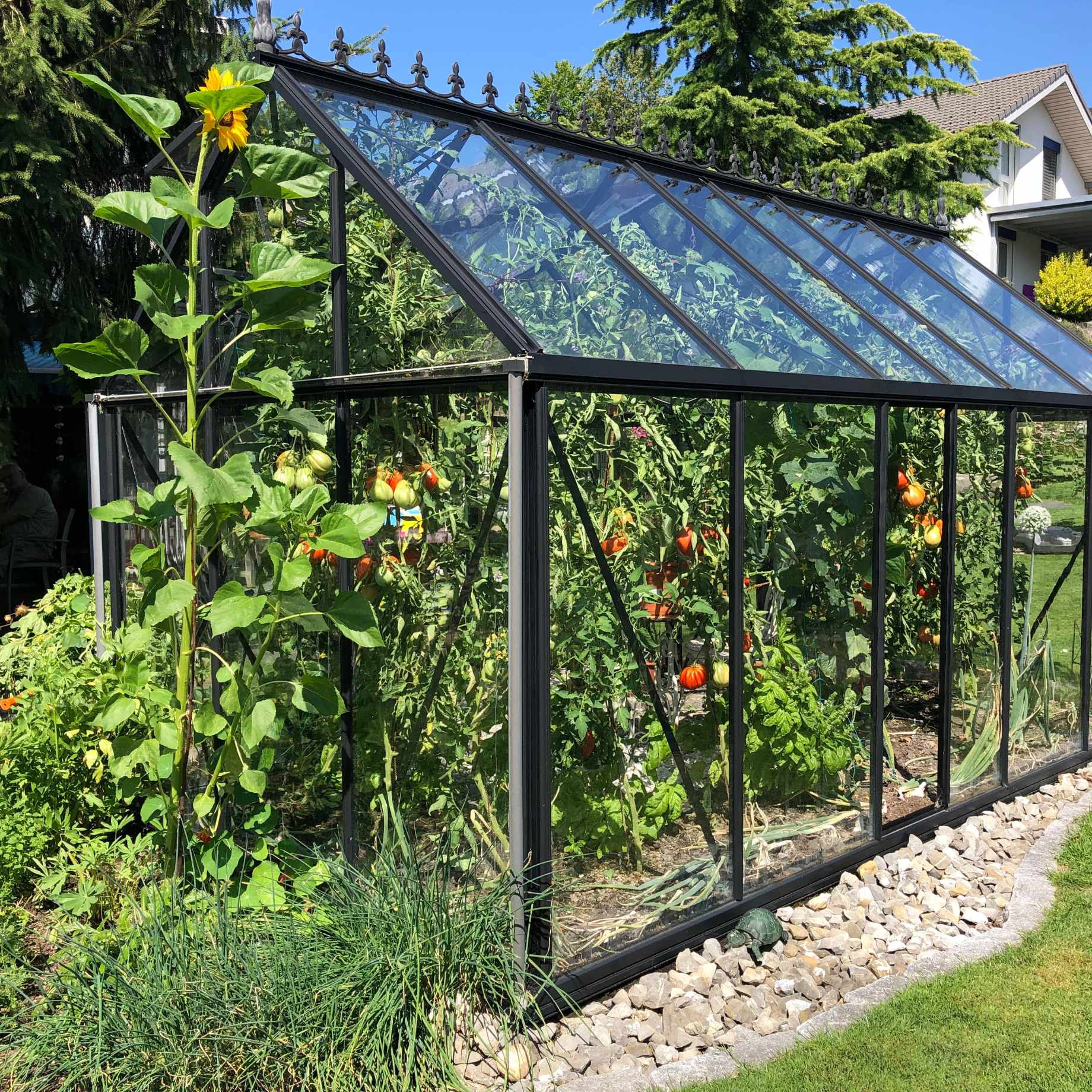Key features
AwardsRHS Award of Garden Merit
Final sizeColt 4-5m in 10 years
FruitEating cherry
Pollination groupSelf fertile, group B
Cropping periodLate season (August)
PositionFull sun
Description
Sweetheart Cherry trees produce masses of tasty, large, red cherries. The eating cherries have a good, rich flavour with slight tartness (in a good way!). With a long cropping period and being the latest to crop of the sweet eating cherries, Sweetheart Cherry is popular for cropping right into late August.
This cherry tree has charming white flowers around April-May, making it just as popular in ornamental gardens as it is in productive orchards. It is self-fertile, so you won’t need any other cherry trees to pollinate it and get your hands on the delicious succulent fruit – particularly useful in a garden setting.
Sweetheart Cherry trees are hardy throughout most of the year but need planting in a a sunny position. This variety benefits from being more resistant to fruit split than most cherry varieties.
Prunus avium ‘Sweetheart’ originates from Canada, 1990.
Planting Steps
1Preparation
- Pot-grown plants can be planted at any time of year, whereas bare roots need to be planted between November and March.
- Clear weeds and grass within a metre of the planting hole.
- Dig a hole as deep as the root mass and twice as wide.
- To help your plant establish more effectively, sprinkle Rootgrow in the hole.
2Planting
- Gently loosen the roots and place into the planting hole.
- Ensure the top of the plant’s compost is flush with the level of the surrounding soil and the graft union or collar of the tree is above ground level.
- Mix 50% of the original soil with 50% compost.
- Fill in the hole, firming the soil gently.
3Last Steps
- Water generously around the base of the plant.
- If you are planting either a single stem tree or mature standard tree, we recommend adding a staking kit and rabbit guard.
Aftercare Advice
Trees and shrubs require a good watering regime for a couple of years whilst they establish. Water well and regularly through spring and summer, increasing in hot or dry weather. If planting in autumn, you may only need to water a little. It is advisable to keep the area free of competing weeds and grass during this period.
For more detailed advice and video guides, please visit our Help & Advice section.

